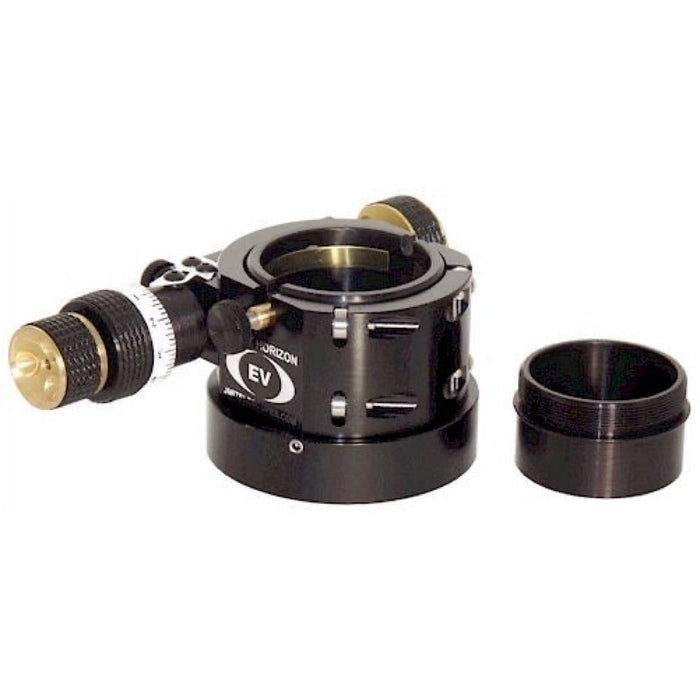
JMI EV-1c Dual-Speed Event Horizon Focuser - Cassegrain

Description
Free Shipping in Canada


Free Shipping in Canada
A masterpiece of engineering and workmanship, JMI Dual-Speed Event Horizon Telescope Focuser – Cassegrain is a low-profile, friction-drive focuser designed for both the amateur and professional telescope market.
The highly acclaimed Crayford design uses high pressure on a metal drive shaft pressing against a 2.5"metal drawtube which is held by bearings on the opposing side. This direct surface-to-surface drive mechanism eliminates backlash and shifting of the drawtube as seen in other designs such as the rack-and-pinion focuser, and allows for very fine adjustments. Zero image shift and zero backlash makes this focuser fantastic for visual and photographic work and a must for CCD imaging. The modular design makes changes and upgrades extremely easy to accomplish.
Featuring a 2" black-anodized aluminum focuser design with dual-speed drive, pusher bearing, rubber grip gold knobs and two-speed operation. The focuser lifts up to 8 pounds and its dual-speed manual controls are over 15 times finer (small outer knob) and 1½ times finer (large inner knob) than most rack-and-pinion focusers, with a 9:1 ratio. Includes a compression ring in the drawtube for holding telescope eyepieces and accessories without scratching the equipment. The adjusting screw presses against the ring which tightens around the eyepiece or accessory.
Compatible with 6" to 16" Cassegrain telescopes (e.g. SCT and Mak-Cas) with standard output threads. Includes an SCT threaded output adapter to allow use of standard SCT equipment on the output side of the focuser. The focuser gives 1/2" of travel and is designed for fine focus after rough adjustment with the normal telescope focusing knob.
Meade Telescope Users: Although this unit can be plugged into the telescope’s base allowing control from a Meade hand unit, you will have better control with the JMI hand unit. Our hand unit includes an electronic brake (not included in Meade systems), which stops the motor as soon as you quit pressing the keys, and linear voltage control for superior speed control. Also, some older LX200 telescopes do not have enough power to properly run the motor on the low setting.